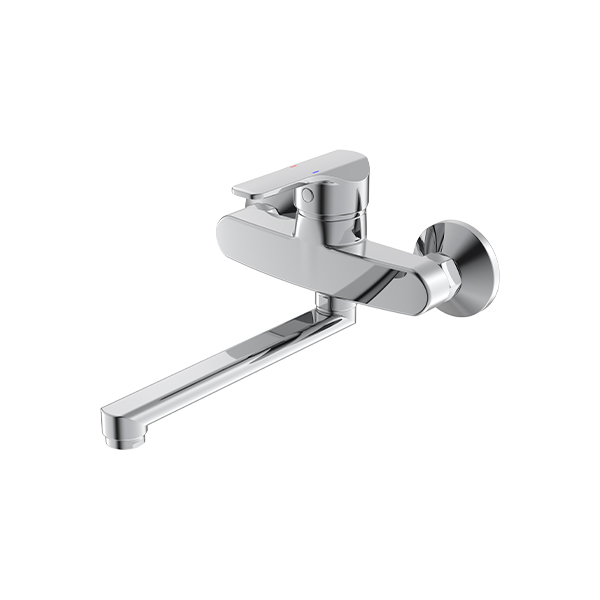Concealed shower systems set are designed to integrate seamlessly into bathroom walls, offering a sleek and modern aesthetic. These systems hide the plumbing components, such as valves and diverters, behind the wall, leaving only the controls and showerheads visible. This design not only enhances the bathroom's appearance but also provides a more spacious and clutter-free environment.

Concealed shower systems are important because they contribute to a minimalist and contemporary bathroom design. By hiding the plumbing elements, these systems create a clean and streamlined look. Additionally, they can improve safety by reducing the number of exposed components that could be accidentally bumped or damaged. The concealed nature also allows for more flexible bathroom layouts, as the placement of controls and showerheads can be customized to suit individual preferences and space constraints.
Key Characteristics of Concealed Shower Systems
Several characteristics define the performance and suitability of concealed shower systems:
1. Valve Configuration
Concealed shower systems can be equipped with various valve configurations, including:
Single-function valves: Control one water outlet, such as a single showerhead.
Dual-function valves: Allow for two outlets, enabling the use of both a rain showerhead and a handheld showerhead simultaneously.
Multi-function valves: Support multiple outlets, accommodating additional features like body jets or waterfall spouts.
Choosing the appropriate valve configuration depends on the desired shower experience and the number of water outlets needed.
2. Material and Finish
The materials and finishes of the exposed components, such as controls and showerheads, play a significant role in the system's durability and aesthetic appeal. Common materials include:
Brass: Known for its strength and resistance to corrosion.
Stainless Steel: Offers a modern look and is highly resistant to rust.
Chrome: Provides a shiny, reflective surface that complements various bathroom styles.
Finishes range from polished to matte, with options like brushed nickel, oil-rubbed bronze, and black matte, allowing homeowners to match the system with their bathroom decor.
3. Water Pressure Compatibility
Concealed shower systems should be compatible with the home's water pressure. Some systems are designed to work with low water pressure, while others require higher pressure to function. It's essential to check the manufacturer's specifications to ensure the system will perform as expected in your home's water conditions.
4. Thermostatic Control
Thermostatic valves maintain a consistent water temperature, preventing sudden fluctuations that can discomfort or even burns. This feature is particularly beneficial in households with children or elderly individuals, as it enhances safety during showers.
5. Ease of Installation and Maintenance
While concealed shower systems offer a clean look, they may require more complex installation compared to exposed systems. Professional installation is often recommended to ensure proper setup and avoid potential issues. Maintenance can also be more challenging, as accessing hidden components may require removing parts of the wall.
Types of Concealed Shower Systems
Concealed shower systems can be categorized based on their features and configurations:
Basic Concealed Systems: Include a single valve and showerhead, suitable for straightforward shower setups.
Dual-function Systems: Feature two outlets, allowing the use of both a rain showerhead and a handheld showerhead.
Multi-function Systems: Offer multiple outlets, supporting additional features like body jets, waterfall spouts, or steam generators.
Digital Systems: Incorporate advanced technology, such as touchscreens or app connectivity, for precise control over water temperature, flow rate, and lighting.
Eco-friendly Systems: Designed to conserve water and energy, these systems include features like flow restrictors and energy-efficient components.
How to Choose a Concealed Shower System
Selecting the right concealed shower system involves considering several factors:
Determine Your Needs: Assess how many water outlets you require and whether you want additional features like body jets or steam capabilities.
Consider Your Bathroom's Aesthetic: Choose materials and finishes that complement your bathroom's design.
Evaluate Water Pressure: Ensure the system is compatible with your home's water pressure to guarantee performance.
Check for Thermostatic Control: For added safety and comfort, select a system with thermostatic valves.
Plan for Installation and Maintenance: Consider the complexity of installation and the ease of accessing components for future maintenance.

 English
English Español
Español

